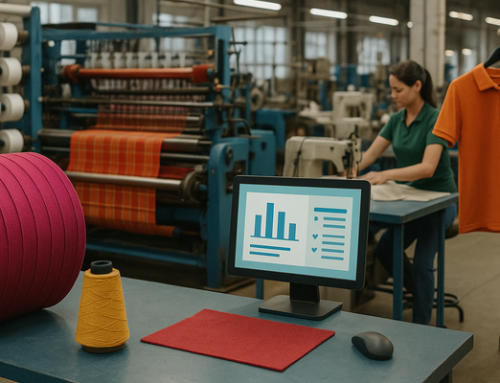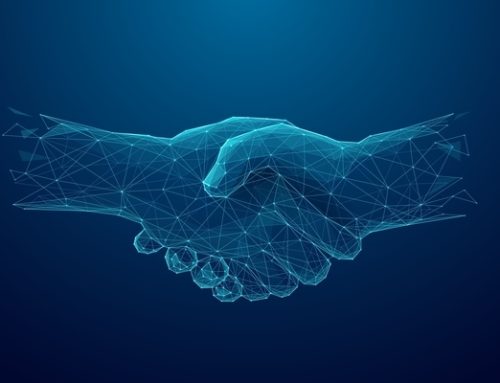History of Denim and Blue Jeans: from Work Clothes to Legend
Just stop for a moment and try to think of how many denim items do you have in your closet.
When it comes to popular fashion trends, only few of them have stood the test of time quite like blue jeans.
Originally designed as sturdy work clothes, blue jeans have transcended their humble origins to become an iconic symbol of style and rebellion. This evolution from plain workwear to a timeless fashion statement is intricately tied to the history of denim, the fabric used to make blue jeans.
From its birth in 18th-century in France to its global domination in the 20th century, the story of blue jeans and denim is a fascinating journey that reflects the changing tides of culture and society. In this article, we’ll take a deep dive into the history of blue jeans and denim, exploring how they went from functional attire for laborers to a legendary fashion staple.
The Birth of Blue Jeans
The origins of denim can be traced back to the French city of Nîmes, where weavers in the 17th century developed a sturdy, cotton-based fabric that would eventually become known as denim. This fabric was characterized by its distinctive diagonal ribbing and indigo blue color, which came from the use of indigo dye – a natural pigment prized for its durability and colorfastness.
The Iconic Indigo Dye: A Symbol of Durability
A key element that defined the early denim fabric was the use of indigo dye, a natural pigment prized for its deep blue hue and exceptional durability. The indigo dye not only gave denim its distinctive color but also contributed to its reputation as a rugged, long-lasting material, marking an important chapter in the history of jeans. This iconic blue color would become a hallmark of denim, symbolizing the fabric’s strength and resilience.
Levi Strauss: The Man Behind the History of Jeans
Levi Strauss, a German-American businessman, is widely regarded as the pioneer of blue jeans. In the 1870s, Strauss recognized the need for a durable and practical work pant made from twill fabric among the miners in the American West, leading to the invention of jeans. Collaborating with Jacob Davis, a tailor, Strauss developed a new type of workwear that featured the use of rivets to reinforce stress points, such as the pockets and crotch.
In 1873, Levi Strauss and Jacob Davis obtained a patent for their innovative riveted denim trousers, solidifying their position as the creators of the modern blue jean. This patented design, which reinforced stress points with metal rivets, not only enhanced the durability of the garment but also paved the way for the widespread popularity of denim as a versatile and long-lasting fabric.
The Rise of Denim as Casual Wear
As denim’s popularity continued to grow, the fabric began to transcend its origins as purely workwear and evolved into a more casual wear. This rise of denim as casual wear marks a significant point where jeans became a symbol of relaxed fashion.
This shift was driven by the increasing acceptance of denim as a versatile and fashionable choice, no longer confined to the rugged world of manual labor, exemplifying how jeans became a symbol of style. The emergence of denim as a casual and stylish option for leisure and everyday wear further cemented its status as a cultural icon and enduring fashion statement.
Jeans through the Decades: Iconic Fashion Moments
Throughout the 20th century, blue jeans became deeply intertwined with various cultural movements and fashion trends.
The Rebel Spirit of Denim in the 1950s
The rebel spirit of the 1950s found its perfect expression in the form of blue jeans, as the younger generation embraced denim as a means to rebel against the conformity of the era.
Actors like James Dean and Marlon Brando popularized the image of the rebellious, leather-clad youth, with their iconic roles in films like “Rebel Without a Cause” and “The Wild One” cementing the association between denim and a defiant attitude.
The Hippie Movement and Bell-Bottoms of the 1960s
As the 1960s ushered in the era of the counterculture and the hippie movement, denim took on a new role as a symbol of free-spiritedness and personal expression. The introduction of bell-bottom jeans, with their wide, flared legs, became a defining fashion statement of the decade, reflecting the era’s embrace of individual freedom and nonconformity.
The Punk Rock Revolution and Ripped Jeans of the 1970s
The 1970s saw the rise of the punk rock movement, and denim once again found itself at the forefront of a cultural revolution. Punk bands and their fans embraced the rebellious spirit of denim, often customizing their jeans with rips, patches, and other DIY embellishments. The image of the punk rocker in ripped, distressed jeans became a powerful symbol of the era’s counterculture and defiance against mainstream society.
In the 1970s and 1980s, the emergence of designer denim brands like Calvin Klein or Gloria Vanderbilt introduced a new era of elevated, fashionable jeans that catered to the growing demand for stylish, yet durable, apparel.
Denim Today: Trends and Innovations in Jeans
Baggy jeans, skinny jeans, flare jeans, high-rise button jeans, low-rise jeans, bootcut jeans, straight jeans, slim jeans, wide leg, loose, tapered jeans, black denim, mid-rise, jeggings, acid wash jeans, regular fit, colored denim, ankle length jeans, capri, bell bottom, jean jacket, jean skirt…
In the modern era, the denim industry has continued to evolve, introducing new trends and innovations to keep pace with changing consumer preferences and environmental concerns. One of the key developments in recent years has been the rise of sustainable denim, as brands and manufacturers have sought to address the environmental impact of traditional denim production through innovations like synthetic indigo.
Sustainable Alternatives: Organic Cotton and Recycled Denim
In response to growing concerns about the environmental impact of denim, the industry has started to explore more sustainable alternatives. Organic cotton, which is grown without the use of synthetic pesticides and fertilizers, is becoming an increasingly popular choice for eco-conscious consumers.
Recycled denim represents not only a step towards more responsible fashion but is also part of the larger history of jeans, as the industry adapts to environmental challenges. is another innovative solution, as it repurposes existing denim materials to create new garments, reducing waste and the need for virgin resources.
Tips and Tricks for Customizing Your Jeans
In addition to the evolution of denim through industry innovations, the rise of DIY denim customization has also played a significant role in the enduring popularity of blue jeans. Consumers have increasingly embraced the opportunity to personalize their denim, transforming their clothing into unique, one-of-a-kind pieces.
Distressing and Ripping Jeans: Creating Your Own Unique Look
One of the most popular DIY techniques for customizing denim is the art of distressing and ripping. By strategically adding rips, frays, and worn-in details to your jeans, you can create a completely personalized look that reflects your style and personality, elevating a simple pair of jeans into a fashion statement. From subtle, lived-in fading to bold, dramatic rips, the possibilities are endless when it comes to distressing and ripping your denim.
Personalizing Your Denim: Embroidery and Appliqués
Another creative way to customize your denim is through the addition of embroidery and appliqués. Whether it’s intricate floral patterns, bold graphic designs, or personalized monograms, embroidery and appliqués allow you to transform your jeans into a truly unique and expressive piece of clothing. This DIY technique is a great way to infuse your personal style and add a touch of individuality to your pair of jeans.
The future of jeans: Technological Advancements in Denim Production
The future of denim production is being shaped by technological advancements that are revolutionizing the way this timeless fabric is created. From the incorporation of sustainable materials like organic cotton and recycled fibers to the implementation of innovative dyeing and finishing techniques, the denim industry is embracing a more eco-friendly and efficient approach to manufacturing.
Cutting-edge technologies, such as laser printing and 3D-knitting, are also being explored to enhance the personalization and customization possibilities for denim. These advancements are allowing brands and consumers to push the boundaries of what is possible with this versatile fabric, creating unique and personalized designs that cater to individual preferences.
Enhancing Denim Production with Technology
The evolution of denim production has been profoundly shaped by technological advancements, allowing manufacturers to meet the growing demand for sustainable, high-quality products. Modern solutions like Datatex NOW ERP streamline every stage of the manufacturing process, from sourcing raw materials to delivering finished garments. Whether producing traditional blue jeans or exploring innovative denim creations, ERP systems designed for the textile industry offer unparalleled efficiency, cost savings, and traceability.
To learn more about how Datatex can help denim manufacturers thrive, explore our solutions for the textile and apparel industry.
Denim as a Canvas: Artistic Expressions and Collaborations
Beyond the technical innovations transforming denim production, the future of this fashion staple is also being shaped by its increasing role as a canvas for artistic expression and collaboration. Denim has long been a medium for self-expression, and this trend is only intensifying as designers, artists, and brands explore new ways to elevate the fabric through unique designs, embellishments, and artistic partnerships.
The history of blue jeans and denim, from work clothes to legend, is a testament to the enduring power of a simple yet versatile fabric and its place in the annals of fashion and cultural history.
So, which piece of jeans will you wear today?




